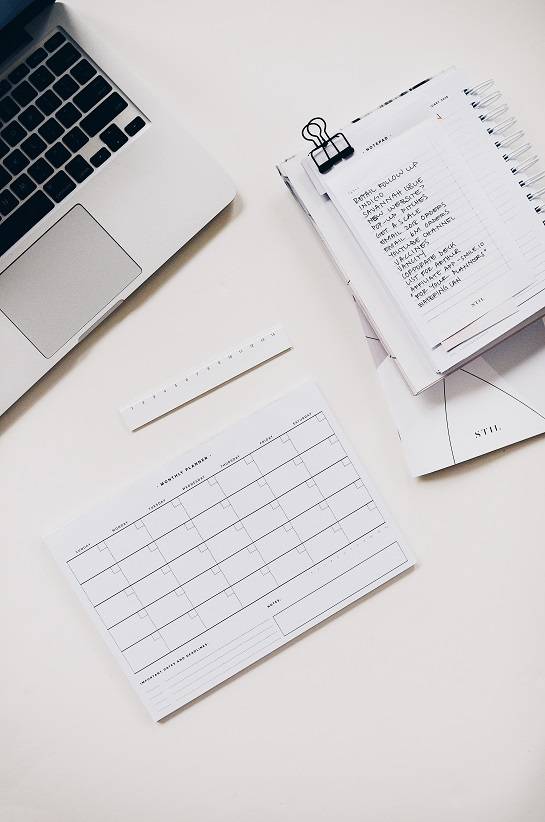Trade shows and expos are a great way to demonstrate your product to a relevant, engaged and live audience. These can be pricey exercises and are traditionally competitive. Therefore, to get a positive ROI you need to make sure you stand out and are well prepared to do so. We have been to a number of pitch nights and community events ourselves and have a few takeaways to share, and one thing we know is how to get your print collateral ready for your next expo.
Before the expo
Research Relevant Expos
There are more than 100 expos happening throughout the year and several may be relevant to you. Research what is out there and find the one that is suited to your industry, and location and speaks to your target audience. It is wise and cost-effective to choose a show specific to your industry, product or service. However, if your budget allows, you can go broad into other categories.
Here is a list of trade shows & exhibitions in South Africa
Have a clear set of objectives
The price to exhibit at an expo or trade show is too high to just show up and hope you get leads. Have a clear measurable objective for why you want to exhibit and structure everything you do around this objective and measurement. A successful trade show will reward you handsomely in the form of new leads, contacts, networks and greater awareness of your product or service.

Define Your Audience
Define your target audience
The question to ask here is, “who do I want to visit my stand?”
Identify and qualify the people you want to reach. This will help you to better plan your message, promotional materials, demonstration and pitch.
Notify current/potential clients and attendees
You don’t have to hope that the right people will show up and visit your stand. You can send the word out before the event to ensure that your ideal target audience will attend and pay you a visit.
- Use your social media to announce to your followers that you will be exhibiting.
- Send an email to current and potential clients to make them aware.
- Get a list of attendees, exhibitors and speakers from the organisers so you can plan who to reach out to at the event.
Create your message
Your message needs to tell your target audience what they need to know so they can take the desired action. The message should be quick to read, and understand, and easy to remember. This message must be clearly displayed on your signage, and your promotional items and incorporated into your demo.
Plan well in advance
Firstly, book your stand or table well in advance to avoid being placed where no one might see you. The best spots fill up fast, so don’t wait until the last minute.
Order your materials in advance. Especially printed materials. We offer a standard turnaround for most of our products, this allows time for printing, packaging and delivery to your doorstep. Remember to factor in design time, if you don’t already have a design. Therefore, order your prints well in advance.
Consider that being disorganised might cost you extra in terms of last-minute delivery costs.
Lastly, prepare your demo and make sure it works. This is your opportunity to show how your product or service in action, so test internally and double-check that you have everything you need.
[Related: A printer’s tips on flyer design, printing, and distribution]

During the expo
During the expo
Use Informative Displays
Incorporate signs that clearly display your message, business name and logo. Remember the message should take only 15 seconds to read, attendees are moving from exhibit to exhibit so you only have a short moment to grab their attention and engage with them.
The printed signs or banners you can use are:
- Counter Stands – Place these on your counter or point-of-sale to announce special offers and benefits.
- Wall banners – Use this as a backdrop to your stand.
- Pull-Up Banners – Place this alongside your stand to display your message and benefits.
- PVC Banners – Mount this above your stand or on the front of your display table/counter.
- X Banners – Similar to your Pull-up Banners, except lighter and simpler.
- Correx or ABS Board Signs – Similar to your PVC Banners, except more robust and durable.
Use fewer words and more imagery. A tip learned from online advertising is to use images of people using your product or service; this creates a story that viewers can relate to and therefore act on.
[Related: Counter Stands – How to maximise your point-of-sale advertising]
Have a product/service demonstration
You are at the trade show, or expo, to display your product to a relevant audience. Therefore, focus your efforts on creating a memorable demonstration of your product that will encourage people to remember your brand when they’re ready to purchase. Pair this with free product samples, if feasible, and other takeaways such as pamphlets or brochures.
Use your best sales colleagues for networking
Brief your expo sales team on the objectives and how they will be measured. Also, ensure they have the necessary materials such as business cards and brochures to be able to execute on the objectives.
In your brief include the current and potential customers who will attend the expo and any other relevant attendees. This gives your salespeople a good sample to start networking with.
Remember, approaching and engaging with people at trade shows and expos is different from pitching in meetings or handling customer service. Therefore, ensure that your colleagues have the necessary training beforehand.
Tip: using incentives to encourage them to achieve the objective will motivate them to get out of their comfort zone and approach people.
[Related: Mistakes to avoid when presenting, interviewing or pitching]

Provide samples and giveaways
Provide samples, giveaways and handouts
As mentioned above, provide samples of your product with your demo. Think of it as a free trial that will lead to a purchase decision in the near future.
You can also include free giveaways such as keychains, stress-balls, pens, notepads, stickers, calendars, and paper bags, branded with your company name and logo. Most attendees might approach your stand to get the gift, use this as an opportunity to start a conversation.
Handouts are useful for providing more information about your company, products and services. Typical handouts are your flyers, brochures, pamphlets and postcards and plastic PVC cards.
[Related: What is the Best Promotional Merchandise for My Marketing Objectives]
Measure
Actively measure against your objectives so you can review the success of the expo and determine whether this is a worthwhile exercise for your company.
Some easy measurements are:
- The number of leads collected – this could be from people completing a lead form at your stand.
- The number of engagements – some expos provide RFID tags that can be scanned when someone engages with your stand – this is like knowing how many clicks your ads received. These tags can also share contact details if the attendee agrees to do so.
- Impressions – ask the organisers for the total number of people who attended and the total number of people who used an entrance or exit near your stand to determine how many people saw your branding.
You should also include unique URLs in your handouts and/or coupon codes. This will determine if any visitors to your website, or purchases made, were from the trade show.
These details can help you plan your ideal position at future expos, how to attract more engagements, and how to collect more leads.
[Related: Integrating print and online marketing – tools, tips and tactics]
After the expo
Always follow-up
Follow up with all the leads and contacts you made during the expo. The easiest way to follow up is to send an email thanking them for visiting, providing additional information and scheduling a call or meeting. You can also connect via LinkedIn, just remember to not leave it there. Scheduling a call or a follow-up meeting gets you closer to closing the deal.
Do your follow-ups within a week of the expo.
Review and plan for the next one
Speak to your salespeople and review your measurements to determine how close you were to achieving your objectives, and what can be improved.

Checklist
Checklist for your preparation
Lastly, here is a brief checklist that will assist in planning for your show:
- What do you want to achieve at the expo?
- Do you know who you want to target?
- Have you notified colleagues and clients of the date and venue?
- Do you have a clear and memorable message?
- Have you ordered the necessary collateral for the expo?
- Is your message clearly illustrated in your display materials and demonstration?
- Is your organisation’s name professionally presented and located at the highest possible point in your exhibit?
- Are your graphics easily read from 10-20 feet away?
- Is the stand setup adequately for your product demo?
- Have you briefed your salespeople?
- Do you have accurate measurements in place?
- Have you prepared an email and script for following up?
Follow this guide and checklist, and you will be well prepared for your next expo.
Related Articles:
- How to get the perfect large format print
- What is the Best Promotional Merchandise for My Marketing Objectives
Further reading:
- Trade Show Design & Branding Tips for Maximum Impact
- 7 Steps to Prepare for a Successful Trade Show Exhibition
- How to Prepare a Successful Trade Show / Exhibition
- 10 Questions to Ask When Preparing for a Trade Show





